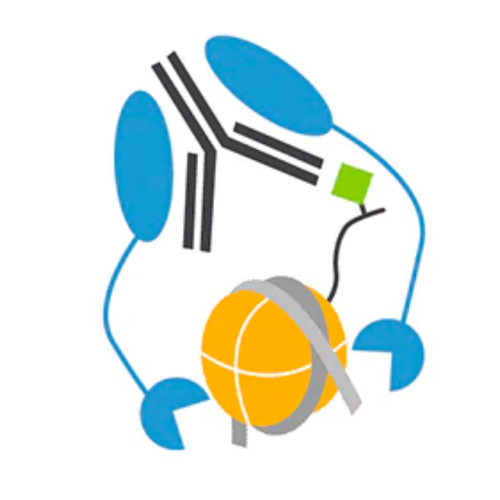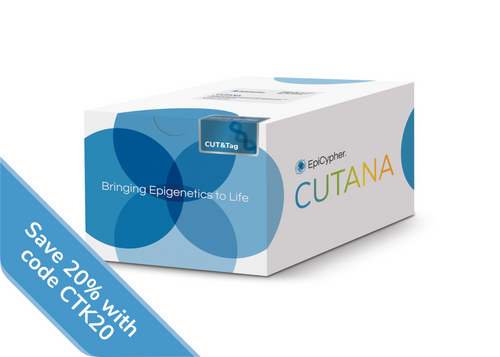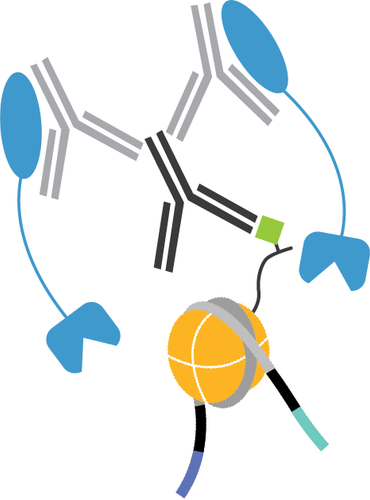

SNAP-CUTANA™ DYKDDDDK Tag Panel
{"url":"https://www.epicypher.com/products/nucleosomes/snap-cutana-dykddddk-tag-panel","add_this":[{"service":"facebook","annotation":""},{"service":"email","annotation":""},{"service":"print","annotation":""},{"service":"twitter","annotation":""},{"service":"linkedin","annotation":""}],"gtin":null,"id":1137,"bulk_discount_rates":[],"can_purchase":true,"meta_description":"16 barcoded spike-in nucleosomes provide quantitative sample normalization and confirmation of K-methyl antibody specificity in CUT&RUN and CUT&Tag","category":["Nucleosomes","Epigenetics Kits and Reagents/CUTANA™ ChIC / CUT&RUN Assays","Nucleosomes/SNAP-CUTANA™ Spike-in Controls"],"AddThisServiceButtonMeta":"","main_image":{"data":"https://cdn11.bigcommerce.com/s-y9o92/images/stencil/{:size}/products/1137/1208/CUTANAspike-inthumbnail_RGB_white_w_border__43569.1707155222.png?c=2","alt":"SNAP-CUTANA™ DYKDDDDK Tag Panel"},"add_to_wishlist_url":"/wishlist.php?action=add&product_id=1137","shipping":{"calculated":true},"num_reviews":0,"weight":"0.00 LBS","custom_fields":[{"id":"1296","name":"Pack Size","value":"50 Reactions"},{"id":"1297","name":"Internal Comment","value":"Excess in bottom shelf of Venom."}],"sku":"19-5001","description":"<!-- <div class=\"product-general-info\">\n <ul style=\"padding: 0\" class=\"product-general-info__list-right\">\n <li class=\"product-general-info__list-item\">\n <a href=\"#bioz\">\n <div id=\"w-s-3835-19-1002\" style=\"\n width: 240px;\n height: 58px;\n position: relative;\n overflow-y: hidden;\n \"></div>\n <div id=\"bioz-w-pb-19-1002-div\" style=\"width: 240px\">\n <a id=\"bioz-w-pb-19-1002\" style=\"font-size: 12px; color: transparent\" href=\"https://www.bioz.com/\"\n target=\"_blank\">\n <img src=\"https://cdn.bioz.com/assets/favicon.png\" style=\"\n width: 11px;\n height: 11px;\n vertical-align: baseline;\n padding-bottom: 0px;\n margin-left: 0px;\n margin-bottom: 0px;\n float: none;\n display: none;\n \" />\n Powered by Bioz\n </a>\n </div>\n </a>\n </li>\n </ul>\n</div> -->\n<div class=\"service_accordion product-droppdown\">\n <div class=\"container\">\n <div id=\"prodAccordion\">\n <div id=\"ProductDescription\" class=\"Block Panel current\">\n <h3 class=\"sub-title1\">Description</h3>\n <div class=\"ProductDescriptionContainer product-droppdown__section-description-specific\">\n <p>\n The SNAP-CUTANA™ DYKDDDDK Tag Panel of spike-in controls for CUT&RUN offers an in-assay control to validate\n anti-FLAG®* antibodies and confirm the success of CUT&RUN reactions involving FLAG epitope-tagged chromatin\n proteins. This essential positive control guides troubleshooting to differentiate problems with\n FLAG epitope-tagging (including transgene expression, chromatin binding of the tagged protein, solvent\n accessibility of the tag, etc.) from technical failures in the CUT&RUN workflow. The panel consists of two\n nucleosomes containing unmodified histone H3 or 3xDYKDDDDK-H3 fusion, each wrapped with two uniquely\n barcoded\n DNA templates (A and B, for an internal technical replicate). The nucleosomes are individually conjugated to\n paramagnetic beads and pooled into a single panel for convenient one-step spike-in to CUT&RUN reactions. The\n panel is added alongside ConA-immobilized cells just prior to the addition of anti-DYKDDDDK or IgG negative\n control antibodies (see <strong>Application Notes</strong> and <strong>Table 1</strong>). The release of\n genomic chromatin and the barcoded\n nucleosomes by pAG-MNase is dependent on the specificity of the antibody used. After sequencing, the\n relative read count of recovered DYKDDDDK vs. unmodified nucleosomes provides a quantitative metric of on-\n vs.\n off-target recovery (<strong>Figure 2</strong>), thereby gauging experimental success and guiding\n troubleshooting efforts. See the most recent <a href=\"/resources/protocols/cutana-cut-and-run-kit-manual\"\n target=\"_blank\">CUTANA™ CUT&RUN protocol</a> and <a href=\"/resources/protocols/\" target=\"_blank\">SNAP-CUTANA™ Spike-in User Guide</a> for detailed information on workflow integration, expected results, data analysis, and troubleshooting.\n </p>\n <p style=\"\n background-color: #4698cb;\n color: #fff;\n padding: 1.3rem;\n text-align: center;\n border-radius: 12px;\n \">\n <a target=\"_blank\" style=\"color: #fff;\"\n href=\"/products/epigenetics-kits-and-reagents/cutana-chic-cut-run-assays/dykddddk-tag-cutana-cut-and-run-antibody\">Pair\n with our DYKDDDDK Tag CUTANA™ CUT&RUN Antibody for CUT&RUN success. Check it out here.\n </a>\n </p>\n <i>*FLAG® is a registered trademark of Merck KGaA, Darmstadt, Germany and ANTI-FLAG is a trademark of\n Sigma-Aldrich Co. LLC.</i>\n </div>\n </div>\n </div>\n <div id=\"prodAccordion\">\n <div id=\"ProductDescription\" class=\"Block Panel current\">\n <h3 class=\"sub-title1\">Validation Data</h3>\n <div class=\"ProductDescriptionContainer product-droppdown__section-description-specific\">\n <section class=\"image-picker\">\n <div class=\"image-picker__left\">\n <div class=\"image-picker__main-content_active image-picker__main-content\">\n <div class=\"image-picker__header-content\">\n <button class=\"image-picker__left-arrow\">\n <svg class=\"image-picker__svg-left\" width=\"24\" height=\"24\" viewBox=\"0 0 24 24\">\n <path d=\"M16.67 0l2.83 2.829-9.339 9.175 9.339 9.167-2.83 2.829-12.17-11.996z\" />\n </svg>\n </button>\n <a href=\"/content/images/products/nucleosomes/19-5001_graphic.jpeg\" target=\"_blank\"\n class=\"image-picker__main-image-link\"><img loading=\"lazy\" alt=\"19-5001_graphic\"\n src=\"/content/images/products/nucleosomes/19-5001_graphic.jpeg\"\n class=\"image-picker__main-image\" />\n <span class=\"image-picker__main-image-caption\">(Click to enlarge)</span></a>\n <button class=\"image-picker__right-arrow\">\n <svg class=\"image-picker__svg-right\" width=\"24\" height=\"24\" viewBox=\"0 0 24 24\">\n <path d=\"M7.33 24l-2.83-2.829 9.339-9.175-9.339-9.167 2.83-2.829 12.17 11.996z\" />\n </svg>\n </button>\n </div>\n <p>\n <span class=\"image-picker__span-content\"><strong>Figure 1: Schematic of SNAP-CUTANA™ DYKDDDDK Tag\n Panel</strong><br />\n The DYKDDDDK Tag Panel contains two nucleosomes - one has an H3 tail fusion to a 3xDYKDDDDK Tag\n epitope and\n one is an unmodified control. Both octamers are wrapped with two uniquely barcoded DNA templates (A\n and B). Each 250 bp DNA template contains a 123 bp 601 nucleosome positioning sequence (gray) [1], a\n unique 22 bp DNA-barcode (white; 4 barcodes total), and a 5’ biotin-TEG. The 5’ and 3’ linkers\n (blue) are compatible with cleavage by pAG-MNase (EpiCypher <a\n href=\"https://www.epicypher.com/products/epigenetics-reagents-and-assays/cutana-chic-cut-run-kit\"\n target=\"_blank\">14-1048</a>,\n <a href=\"https://www.epicypher.com/products/epigenetics-reagents-and-assays/cutana-pag-mnase-for-chic-cut-and-run-workflows-50-rxns\"\n target=\"_blank\">15-1016</a>)\n during CUT&RUN. The\n nucleosomes are individually pre-conjugated to paramagnetic beads and pooled for convenient use.\n </span>\n </p>\n </div>\n <div class=\"image-picker__main-content\">\n <div class=\"image-picker__header-content\">\n <button class=\"image-picker__left-arrow\">\n <svg class=\"image-picker__svg-left\" width=\"24\" height=\"24\" viewBox=\"0 0 24 24\">\n <path d=\"M16.67 0l2.83 2.829-9.339 9.175 9.339 9.167-2.83 2.829-12.17-11.996z\" />\n </svg>\n </button>\n <a href=\"/content/images/products/nucleosomes/19-5001_dykddddk_tag_panel.jpeg\" target=\"_blank\"\n class=\"image-picker__main-image-link\"><img loading=\"lazy\" alt=\"19-5001_dykddddk_tag_panel\"\n src=\"/content/images/products/nucleosomes/19-5001_dykddddk_tag_panel.jpeg\"\n class=\"image-picker__main-image\" />\n <span class=\"image-picker__main-image-caption\">(Click to enlarge)</span></a>\n <button class=\"image-picker__right-arrow\">\n <svg class=\"image-picker__svg-right\" width=\"24\" height=\"24\" viewBox=\"0 0 24 24\">\n <path d=\"M7.33 24l-2.83-2.829 9.339-9.175-9.339-9.167 2.83-2.829 12.17 11.996z\" />\n </svg>\n </button>\n </div>\n <p>\n <span class=\"image-picker__span-content\"><strong>Figure 2: SNAP-CUTANA™ DYKDDDDK Tag Panel provides an\n in-assay control for CUT&RUN reactions targeting FLAG-tagged proteins</strong><br />\n CUT&RUN was performed as described in <strong>Figure 5</strong>. CUT&RUN sequencing reads were\n aligned to the unique DNA barcodes corresponding to each nucleosome in the SNAP-CUTANA™ DYKDDDDK Tag\n Panel. Data are expressed as\n a percent relative to on-target recovery (DYKDDDDK Tag set to 100%) or total counts (IgG). IgG\n antibody\n results demonstrate equal loading of unmodified and epitope nucleosomes in the panel. DYKDDDDK Tag\n antibody results show selective enrichment of the DYKDDDDK Tag spike-in nucleosomes, validating all\n CUT&RUN steps, including DYKDDDDK antibody binding, pAG-MNase cleavage, and wash conditions.\n </span>\n </p>\n </div>\n <div class=\"image-picker__main-content\">\n <div class=\"image-picker__header-content\">\n <button class=\"image-picker__left-arrow\">\n <svg class=\"image-picker__svg-left\" width=\"24\" height=\"24\" viewBox=\"0 0 24 24\">\n <path d=\"M16.67 0l2.83 2.829-9.339 9.175 9.339 9.167-2.83 2.829-12.17-11.996z\" />\n </svg>\n </button>\n <a href=\"/content/images/products/nucleosomes/19-5001_table.jpeg\" target=\"_blank\"\n class=\"image-picker__main-image-link\">\n <img loading=\"lazy\" alt=\"19-5001_table\"\n src=\"/content/images/products/nucleosomes/19-5001_table.jpeg\" class=\"image-picker__main-image\" />\n <span class=\"image-picker__main-image-caption\">(Click to enlarge)</span>\n </a>\n <button class=\"image-picker__right-arrow\">\n <svg class=\"image-picker__svg-right\" width=\"24\" height=\"24\" viewBox=\"0 0 24 24\">\n <path d=\"M7.33 24l-2.83-2.829 9.339-9.175-9.339-9.167 2.83-2.829 12.17 11.996z\" />\n </svg>\n </button>\n </div>\n <p>\n <span class=\"image-picker__span-content\">\n <strong>Table 1: Recommended SNAP-CUTANA™ DYKDDDDK Tag Panel Spike-in dilution for CUT&RUN reactions\n of varying starting cell number.</strong><br />\n </span>\n </p>\n </div>\n <div class=\"image-picker__main-content\">\n <div class=\"image-picker__header-content\">\n <button class=\"image-picker__left-arrow\">\n <svg class=\"image-picker__svg-left\" width=\"24\" height=\"24\" viewBox=\"0 0 24 24\">\n <path d=\"M16.67 0l2.83 2.829-9.339 9.175 9.339 9.167-2.83 2.829-12.17-11.996z\" />\n </svg>\n </button>\n <a href=\"/content/images/products/nucleosomes/19-5001_dna_gel_data.jpeg\" target=\"_blank\"\n class=\"image-picker__main-image-link\">\n <img loading=\"lazy\" alt=\"19-5001_dna_gel_data\"\n src=\"/content/images/products/nucleosomes/19-5001_dna_gel_data.jpeg\"\n class=\"image-picker__main-image\" />\n <span class=\"image-picker__main-image-caption\">(Click to enlarge)</span>\n </a>\n <button class=\"image-picker__right-arrow\">\n <svg class=\"image-picker__svg-right\" width=\"24\" height=\"24\" viewBox=\"0 0 24 24\">\n <path d=\"M7.33 24l-2.83-2.829 9.339-9.175-9.339-9.167 2.83-2.829 12.17 11.996z\" />\n </svg>\n </button>\n </div>\n <p>\n <span class=\"image-picker__span-content\">\n <strong>Figure 3: DNA gel data</strong><br />\n Nucleosomes in the SNAP-CUTANA™ DYKDDDDK Tag Panel were resolved via native PAGE and stained with ethidium\n bromide to confirm intact nucleosome assembly. <strong>Lane 1:</strong> Free\n 250 bp DNA used in\n nucleosome assembly (100 ng). <strong>Lane 2:</strong> Intact nucleosomes (400 ng).\n </span>\n </p>\n </div>\n <div class=\"image-picker__main-content\">\n <div class=\"image-picker__header-content\">\n <button class=\"image-picker__left-arrow\">\n <svg class=\"image-picker__svg-left\" width=\"24\" height=\"24\" viewBox=\"0 0 24 24\">\n <path d=\"M16.67 0l2.83 2.829-9.339 9.175 9.339 9.167-2.83 2.829-12.17-11.996z\" />\n </svg>\n </button>\n <a href=\"/content/images/products/nucleosomes/19-5001_protein_gel_data.jpeg\" target=\"_blank\"\n class=\"image-picker__main-image-link\">\n <img loading=\"lazy\" alt=\"19-5001_protein_gel_data\"\n src=\"/content/images/products/nucleosomes/19-5001_protein_gel_data.jpeg\"\n class=\"image-picker__main-image\" />\n <span class=\"image-picker__main-image-caption\">(Click to enlarge)</span>\n </a>\n <button class=\"image-picker__right-arrow\">\n <svg class=\"image-picker__svg-right\" width=\"24\" height=\"24\" viewBox=\"0 0 24 24\">\n <path d=\"M7.33 24l-2.83-2.829 9.339-9.175-9.339-9.167 2.83-2.829 12.17 11.996z\" />\n </svg>\n </button>\n </div>\n <p>\n <span class=\"image-picker__span-content\">\n <strong>Figure 4: Protein gel data</strong><br />\n Coomassie stained SDS-PAGE gel of the nucleosome containing a 3xDYKDDDDK-H3 fusion (1 μg) in the\n SNAP-CUTANA\n DYKDDDDK Tag Panel demonstrates the purity of histones in the preparation. Sizes of molecular weight\n markers and positions of the core histones (H2A, H2B, 3xDYKDDDDK-H3, and H4) are indicated.\n </span>\n </p>\n </div>\n <div class=\"image-picker__main-content\">\n <div class=\"image-picker__header-content\">\n <button class=\"image-picker__left-arrow\">\n <svg class=\"image-picker__svg-left\" width=\"24\" height=\"24\" viewBox=\"0 0 24 24\">\n <path d=\"M16.67 0l2.83 2.829-9.339 9.175 9.339 9.167-2.83 2.829-12.17-11.996z\" />\n </svg>\n </button>\n <a href=\"/content/images/products/nucleosomes/19-5001_cr_workflow.png\" target=\"_blank\"\n class=\"image-picker__main-image-link\">\n <img loading=\"lazy\" alt=\"19-5001_cr_workflow\"\n src=\"/content/images/products/nucleosomes/19-5001_cr_workflow.png\"\n class=\"image-picker__main-image\" />\n <span class=\"image-picker__main-image-caption\">(Click to enlarge)</span>\n </a>\n <button class=\"image-picker__right-arrow\">\n <svg class=\"image-picker__svg-right\" width=\"24\" height=\"24\" viewBox=\"0 0 24 24\">\n <path d=\"M7.33 24l-2.83-2.829 9.339-9.175-9.339-9.167 2.83-2.829 12.17 11.996z\" />\n </svg>\n </button>\n </div>\n <p>\n <span class=\"image-picker__span-content\">\n <strong>Figure 5: CUT&RUN methods</strong><br />\n CUT&RUN was performed on 500k MDA-MB-231 native cells stably expressing 3xFLAG-tagged GATA3\n [1]** using the CUTANA™ ChIC/CUT&RUN Kit v3 (EpiCypher <a\n href=\"/products/epigenetics-reagents-and-assays/cutana-chic-cut-and-run-kit\"\n target=\"_blank\">14-1048</a>). SNAP-CUTANA™ DYKDDDDK Tag Panel was added\n just prior to the addition of either DYKDDDDK Tag (0.05 μg; EpiCypher <a href=\"/13-2031\"\n target=\"_blank\">13-2031</a>) or IgG negative control\n (0.5 μg; EpiCypher <a\n href=\"/products/nucleosomes/snap-cutana-spike-in-controls/cutana-igg-negative-control-antibody-for-cut-run-and-cut-tag\"\n target=\"_blank\">13-0042</a>) antibodies. Library preparation was performed with 5 ng of DNA (or\n the\n total amount recovered if less than 5 ng) using the CUTANA™ CUT&RUN Library Prep Kit (EpiCypher\n <a href=\"/products/epigenetics-reagents-and-assays/cutana-cut-and-run-library-prep-kit\"\n target=\"_blank\">14-1001/14-1002</a>). Libraries were run on an Illumina NextSeq2000 with\n paired-end sequencing (2x50\n bp). Data were aligned to the hg19 genome using Bowtie2. Data were filtered to remove duplicates,\n multi-aligned reads, and ENCODE DAC Exclusion List regions.\n <br>\n <br>\n <i>**Thanks to Dr. Takaku (UND) for 3xFLAG-GATA3-3xHA MDA-MB-231 cells.</i>\n </span>\n </p>\n </div>\n </div>\n <aside class=\"image-picker__right\">\n <div class=\"image-picker__gallery\">\n <img loading=\"lazy\" alt=\"19-5001_graphic\"\n src=\"/content/images/products/nucleosomes/19-5001_graphic.jpeg\" width=\"200\"\n class=\"image-picker__side-image image-picker__side-image_active\" role=\"button\" />\n <img loading=\"lazy\" alt=\"19-5001_dykddddk_tag_panel\"\n src=\"/content/images/products/nucleosomes/19-5001_dykddddk_tag_panel.jpeg\"\n class=\"image-picker__side-image\" role=\"button\" />\n <img loading=\"lazy\" alt=\"19-5001_table\" src=\"/content/images/products/nucleosomes/19-5001_table.jpeg\"\n class=\"image-picker__side-image\" role=\"button\" />\n <img loading=\"lazy\" alt=\"19-5001_dna_gel_data\"\n src=\"/content/images/products/nucleosomes/19-5001_dna_gel_data.jpeg\" class=\"image-picker__side-image\"\n role=\"button\" />\n <img loading=\"lazy\" alt=\"19-5001_protein_gel_data\"\n src=\"/content/images/products/nucleosomes/19-5001_protein_gel_data.jpeg\"\n class=\"image-picker__side-image\" role=\"button\" />\n <img loading=\"lazy\" alt=\"19-5001_cr_workflow\"\n src=\"/content/images/products/nucleosomes/19-5001_cr_workflow.png\" class=\"image-picker__side-image\"\n role=\"button\" />\n </div>\n </aside>\n </section>\n </div>\n </div>\n </div>\n <div id=\"userguide\"></div>\n <div id=\"prodAccordion\">\n <div id=\"ProductDescription\" class=\"Block Panel\">\n <h3 class=\"sub-title1\">Technical Information</h3>\n <div class=\"ProductDescriptionContainer product-droppdown__section-description\">\n <div class=\"product-tech-info\">\n <div class=\"product-tech-info__line-item\">\n <div class=\"product-tech-info__line-item-left\">\n <b>Storage</b>\n </div>\n <div class=\"product-tech-info__line-item-right\">\n Store at -20°C.\n <strong>Lower temperatures can cause freezing and will\n permanently damage the magnetic beads</strong>. Stable for six months from date of\n receipt.<br />\n To resuspend beads, gently mix into an even suspension by pipetting; <strong>DO NOT VORTEX</strong>\n </div>\n </div>\n <div class=\"product-tech-info__line-item\">\n <div class=\"product-tech-info__line-item-left\">\n <b>Formulation</b>\n </div>\n <div class=\"product-tech-info__line-item-right\">\n A mixture of two semi-synthetic nucleosomes conjugated to paramagnetic beads in 10 mM sodium\n cacodylate pH 7.5, 100 mM NaCl, 1 mM EDTA, 50% glycerol (w/v), 1x Protease Inhibitor Cocktail,\n 100 μg/mL BSA, 10 mM β-mercaptoethanol.\n </div>\n </div>\n </div>\n </div>\n </div>\n </div>\n <div id=\"prodAccordion\">\n <div id=\"ProductDescription\" class=\"Block Panel\">\n <h3 class=\"sub-title1\">Application Notes</h3>\n <div class=\"ProductDescriptionContainer product-droppdown__section-description\">\n <p>\n <em>See the most recent <a href=\"/resources/protocols/cutana-cut-and-run-kit-manual\" target=\"_blank\">EpiCypher CUT&RUN protocol</a> and\n <a href=\"/resources/protocols/\" target=\"_blank\">SNAP-CUTANA™ Spike-in User Guide</a>\n for detailed information on workflow integration, expected\n results, data analysis, and troubleshooting. In Brief:</em>\n </p>\n <p>\n <u><strong>Product Use:</strong></u> Use the SNAP-CUTANA™ DYKDDDDK Tag Panel for control reactions\n containing <a href=\"/products/epigenetics-kits-and-reagents/cutana-chic-cut-run-assays/dykddddk-tag-cutana-cut-and-run-antibody\" target=\"_blank\">DYKDDDDK</a>\n and <a\n href=\"/products/nucleosomes/snap-cutana-spike-in-controls/cutana-igg-negative-control-antibody-for-cut-run-and-cut-tag\">IgG</a>\n antibodies. Just before antibody addition in CUT&RUN, gently pipette to resuspend beads (do not\n vortex), then spike in 2 μL per 500k cells. If using less than the standard number of cells, decrease the\n amount of SNAP-CUTANA spike-in linearly by preparing a “working stock” dilution of the panel in Antibody\n Buffer, made fresh the day of use (<strong>Table 1</strong>). Adjust spike-in volume as needed aiming for\n the spike-in\n barcodes to comprise ~1% of the total unique sequencing reads. Table 1 gives recommended dilution amounts\n for varying numbers of starting cells, but optimization may be required for user-specific conditions.\n </p>\n <p>\n <u><strong>Data Analysis:</strong></u> Detailed instructions are in the SNAP-CUTANA™ Spike-in User Guide (see <strong>Documents & Resources</strong> section below). Perform paired-end sequencing for a minimum of 50 bases. The Widom\n 601\n DNA and DNA barcodes are distinct from human, mouse, fly, and yeast genomes such that they can be readily\n distinguished from sample chromatin. A shell script (.sh file extension) for spike-in alignment and an excel\n template for heatmap generation are available in the <strong>Documents & Resources</strong> section below.\n The\n shell script can be opened with\n any basic text editor program and contains detailed instructions hashed (#) at the beginning of the\n document. Make sure to copy and paste the R1 & R2 echo loop so there is a set for each reaction being\n analyzed.\n </p>\n </div>\n </div>\n </div>\n <div id=\"prodAccordion\">\n <div id=\"ProductDescription\" class=\"Block Panel\">\n <h3 class=\"sub-title1\">References</h3>\n <div class=\"ProductDescriptionContainer product-droppdown__section-description\">\n <strong>Background References:</strong>\n <br />\n [1] Lowary & Widom <em>J. Mol. Biol.</em> (1998). PMID:\n <a href=\"https://pubmed.ncbi.nlm.nih.gov/9514715/\"\n title=\"New DNA Sequence Rules for High Affinity Binding to Histone Octamer and Sequence-Directed Nucleosome Positioning\"\n target=\"new\">9514715</a><br />\n [2] Takaku et al. <em>Genome Biol.</em> (2016). PMID:\n <a href=\"https://pubmed.ncbi.nlm.nih.gov/26922637/\"\n title=\"Expression and Purification of Recombinant Histones and Nucleosome Reconstitution\" target=\"new\">\n 26922637</a><br />\n </div>\n </div>\n </div>\n <div id=\"prodAccordion\">\n <div id=\"ProductDescription\" class=\"Block Panel current\">\n <h3 class=\"sub-title1\">Documents & Resources</h3>\n\n <div class=\"ProductDescriptionContainer product-droppdown__section-description-specific\">\n <div class=\"product-documents\">\n <a href=\"/content/documents/tds/19-5001.pdf\" target=\"_blank\" class=\"product-documents__link\">\n <svg version=\"1.1\" id=\"Layer_1\" xmlns=\"http://www.w3.org/2000/svg\"\n xmlns:xlink=\"http://www.w3.org/1999/xlink\" x=\"0px\" y=\"0px\" viewBox=\"0 0 228 240\"\n style=\"enable-background: new 0 0 228 240\" xml:space=\"preserve\" class=\"product-documents__icon\"\n alt=\"19-5001 Datasheet\">\n <g>\n <path class=\"product-documents__svg-pdf\"\n d=\"M191.92,68.77l-47.69-47.69c-1.33-1.33-3.12-2.08-5.01-2.08H45.09C41.17,19,38,22.17,38,26.09v184.36\n c0,3.92,3.17,7.09,7.09,7.09h141.82c3.92,0,7.09-3.17,7.09-7.09V73.8C194,71.92,193.25,70.1,191.92,68.77z M177.65,77.06h-41.7\n v-41.7L177.65,77.06z M178.05,201.59H53.95V34.95h66.92v47.86c0,5.14,4.17,9.31,9.31,9.31h47.86V201.59z\" />\n </g>\n <rect x=\"20\" y=\"112\" class=\"product-documents__svg-background\" width=\"146\" height=\"76\" />\n <g>\n <path class=\"product-documents__svg-pdf\" d=\"M23.83,125.68h22.36c5.29,0,9.41,1.33,12.35,4c2.94,2.67,4.42,6.39,4.42,11.18c0,4.78-1.47,8.51-4.42,11.18\n c-2.94,2.67-7.06,4-12.35,4H34.59v18.29H23.83V125.68z M44.81,147.9c5.38,0,8.07-2.32,8.07-6.97c0-2.39-0.67-4.16-2-5.31\n c-1.33-1.15-3.36-1.73-6.07-1.73H34.59v14.01H44.81z\" />\n <path class=\"product-documents__svg-pdf\"\n d=\"M69.92,125.68h18.91c5.29,0,9.84,0.97,13.66,2.9c3.82,1.93,6.74,4.72,8.76,8.35\n c2.02,3.63,3.04,7.98,3.04,13.04c0,5.06-1,9.42-3,13.08c-2,3.66-4.91,6.45-8.73,8.38c-3.82,1.93-8.4,2.9-13.73,2.9H69.92V125.68z\n M88.07,165.63c10.35,0,15.52-5.22,15.52-15.66c0-10.4-5.17-15.59-15.52-15.59h-7.38v31.26H88.07z\" />\n <path class=\"product-documents__svg-pdf\"\n d=\"M122.57,125.68h32.84v8.49h-22.22v11.18h20.84v8.49h-20.84v20.49h-10.63V125.68z\" />\n </g>\n </svg>\n <span class=\"product-documents__info\">Technical Datasheet</span>\n </a>\n </div>\n <div class=\"product-documents\">\n <div style=\"display: flex\">\n <a href=\"/content/documents/SNAP-CUTANA_K-MetStat_user_guide.pdf\" target=\"_blank\"\n class=\"product-documents__link\">\n <svg version=\"1.1\" id=\"Layer_1\" xmlns=\"http://www.w3.org/2000/svg\"\n xmlns:xlink=\"http://www.w3.org/1999/xlink\" x=\"0px\" y=\"0px\" viewBox=\"0 0 228 240\"\n style=\"enable-background: new 0 0 228 240\" xml:space=\"preserve\" class=\"product-documents__icon\"\n alt=\"16-0030 Datasheet\">\n <g>\n <path class=\"product-documents__svg-pdf\"\n d=\"M191.92,68.77l-47.69-47.69c-1.33-1.33-3.12-2.08-5.01-2.08H45.09C41.17,19,38,22.17,38,26.09v184.36\n c0,3.92,3.17,7.09,7.09,7.09h141.82c3.92,0,7.09-3.17,7.09-7.09V73.8C194,71.92,193.25,70.1,191.92,68.77z M177.65,77.06h-41.7\n v-41.7L177.65,77.06z M178.05,201.59H53.95V34.95h66.92v47.86c0,5.14,4.17,9.31,9.31,9.31h47.86V201.59z\" />\n </g>\n <rect x=\"20\" y=\"112\" class=\"product-documents__svg-background\" width=\"146\" height=\"76\" />\n <g>\n <path class=\"product-documents__svg-pdf\" d=\"M23.83,125.68h22.36c5.29,0,9.41,1.33,12.35,4c2.94,2.67,4.42,6.39,4.42,11.18c0,4.78-1.47,8.51-4.42,11.18\n c-2.94,2.67-7.06,4-12.35,4H34.59v18.29H23.83V125.68z M44.81,147.9c5.38,0,8.07-2.32,8.07-6.97c0-2.39-0.67-4.16-2-5.31\n c-1.33-1.15-3.36-1.73-6.07-1.73H34.59v14.01H44.81z\" />\n <path class=\"product-documents__svg-pdf\"\n d=\"M69.92,125.68h18.91c5.29,0,9.84,0.97,13.66,2.9c3.82,1.93,6.74,4.72,8.76,8.35\n c2.02,3.63,3.04,7.98,3.04,13.04c0,5.06-1,9.42-3,13.08c-2,3.66-4.91,6.45-8.73,8.38c-3.82,1.93-8.4,2.9-13.73,2.9H69.92V125.68z\n M88.07,165.63c10.35,0,15.52-5.22,15.52-15.66c0-10.4-5.17-15.59-15.52-15.59h-7.38v31.26H88.07z\" />\n <path class=\"product-documents__svg-pdf\"\n d=\"M122.57,125.68h32.84v8.49h-22.22v11.18h20.84v8.49h-20.84v20.49h-10.63V125.68z\" />\n </g>\n </svg>\n </a>\n <a class=\"product-documents__link\" href=\"/content/documents/SNAP-CUTANA_user_guide.pdf\"\n target=\"_blank\"><span class=\"product-documents__info\">SNAP-CUTANA™ Spike-in User Guide</span>\n </a>\n </div>\n </div>\n <div class=\"product-documents\">\n <a href=\"/content/documents/SNAP-CUTANA_DYKDDDDK_Tag_Panel_ShellScript.sh\" target=\"_blank\"\n class=\"product-documents__link\">\n <svg version=\"1.1\" id=\"Layer_1\" xmlns=\"http://www.w3.org/2000/svg\"\n xmlns:xlink=\"http://www.w3.org/1999/xlink\" x=\"0px\" y=\"0px\" viewBox=\"0 0 228 240\"\n style=\"enable-background: new 0 0 228 240\" xml:space=\"preserve\" class=\"product-documents__icon\">\n <g>\n <path class=\"product-documents__svg-txt\" d=\"M199.12,66.39l-51.16-51.16c-1.43-1.43-3.35-2.23-5.37-2.23H41.61c-4.2,0-7.61,3.41-7.61,7.61v197.79\n c0,4.2,3.41,7.61,7.61,7.61h152.14c4.2,0,7.61-3.41,7.61-7.61V71.79C201.36,69.77,200.55,67.82,199.12,66.39L199.12,66.39z\n M183.81,75.28h-44.74V30.54L183.81,75.28z M184.24,208.88H51.12V30.12h71.79v51.35c0,5.51,4.47,9.98,9.98,9.98h51.35V208.88z\n M115.78,144.7H72.04c-1.05,0-1.9,0.86-1.9,1.9v11.41c0,1.05,0.86,1.9,1.9,1.9h43.74c1.05,0,1.9-0.86,1.9-1.9V146.6\n C117.68,145.55,116.82,144.7,115.78,144.7z M70.13,114.27v11.41c0,1.05,0.86,1.9,1.9,1.9h91.29c1.05,0,1.9-0.86,1.9-1.9v-11.41\n c0-1.05-0.86-1.9-1.9-1.9H72.04C70.99,112.37,70.13,113.22,70.13,114.27z\" />\n </g>\n </svg>\n <span class=\"product-documents__info\">\n SNAP-CUTANA™ DYKDDDDK Tag Panel Shell Script</span>\n </a>\n </div>\n <div class=\"product-documents\">\n <a href=\"/content/documents/SNAP-CUTANA_DYKDDDDK_Tag_Panel_Analysis.xlsx\" target=\"_blank\"\n class=\"product-documents__link\">\n <svg version=\"1.1\" id=\"Layer_1\" xmlns=\"http://www.w3.org/2000/svg\"\n xmlns:xlink=\"http://www.w3.org/1999/xlink\" x=\"0px\" y=\"0px\" viewBox=\"0 0 228 240\"\n style=\"enable-background: new 0 0 228 240\" xml:space=\"preserve\" class=\"product-documents__icon\">\n <g>\n <path class=\"product-documents__svg-excel\"\n d=\"M193.17,69.88l-46.83-46.83c-1.31-1.31-3.07-2.05-4.92-2.05H48.96C45.11,21,42,24.11,42,27.96v181.07\n c0,3.85,3.11,6.96,6.96,6.96h139.29c3.85,0,6.96-3.11,6.96-6.96V74.82C195.21,72.97,194.47,71.19,193.17,69.88L193.17,69.88z\n M179.15,78.02h-40.96V37.06L179.15,78.02z M179.54,200.33H57.67V36.67h65.73v47.01c0,5.05,4.09,9.14,9.14,9.14h47.01V200.33z\n M119.06,133.32l-13.45-22.29c-0.48-0.78-2.24-1.24-2.24-1.24h-8.33c-0.5,0-0.98,0.13-1.39,0.41c-1.21,0.76-1.58,2.36-0.8,3.6\n l17.85,28.28l-18.08,28.8c-0.76,1.22-0.39,2.83,0.84,3.6c0.41,0.26,0.89,0.39,1.37,0.39h7.48c0,0,1.74-0.26,2.22-1.02l13.65-22.09\n l13.56,22.07c0.48,0.78,2.22,1.26,2.22,1.26h8.18c0.5,0,0.98-0.15,1.42-0.42c1.22-0.79,1.57-2.4,0.79-3.63l-18.35-28.48\n l18.63-28.94c0.78-1.23,0.42-2.85-0.81-3.63c-0.42-0.27-0.9-0.41-1.4-0.41h-7.79c0,0-1.76,0.7-2.24,1.48L119.06,133.32z\" />\n </g>\n </svg>\n <span class=\"product-documents__info\">SNAP-CUTANA™ DYKDDDDK Tag Panel Analysis</span>\n </a>\n </div>\n </div>\n </div>\n </div>\n </div>\n</div>\n<!-- <script>\n $(document).ready(function () {\n var widget_micro_obj = new v_widget_obj(\"s\", [1]);\n widget_micro_obj.request_catalog_number_widget_data_internal(\n \"19-5001\",\n \"19-5001\"\n );\n });\n</script>\n<style>\n .bioz-w-header td {\n padding: 0;\n }\n\n td table {\n margin: 0;\n padding: 6px !important;\n }\n</style> -->","tags":[],"warranty":"","price":{"without_tax":{"formatted":"$295.00","value":295,"currency":"USD"},"tax_label":"Sales Tax"},"detail_messages":"","availability":"","page_title":"SNAP-CUTANA K-MetStat Spike-In Control for CUT&RUN / CUT&Tag","cart_url":"https://www.epicypher.com/cart.php","max_purchase_quantity":0,"mpn":null,"upc":null,"options":[],"related_products":[{"id":694,"sku":null,"name":"CUTANA™ pAG-MNase for ChIC/CUT&RUN Workflows","url":"https://www.epicypher.com/products/epigenetics-reagents-and-assays/cutana-pag-mnase-for-chic-cut-and-run-workflows","availability":"","rating":null,"brand":{"name":null},"category":["Epigenetics Kits and Reagents","Epigenetics Kits and Reagents/CUTANA™ ChIC / CUT&RUN Assays"],"summary":"\n \n \n Type: Nuclease\n \n \n Mol Wgt: 43.7 kDa\n \n \n \n ","image":{"data":"https://cdn11.bigcommerce.com/s-y9o92/images/stencil/{:size}/products/694/689/Screen_Shot_2020-02-12_at_11.01.55_AM__17144.1581530752.png?c=2","alt":"CUTANA™ pAG-MNase for ChIC/CUT&RUN Workflows"},"images":[{"data":"https://cdn11.bigcommerce.com/s-y9o92/images/stencil/{:size}/products/694/689/Screen_Shot_2020-02-12_at_11.01.55_AM__17144.1581530752.png?c=2","alt":"CUTANA™ pAG-MNase for ChIC/CUT&RUN Workflows"}],"date_added":"12th Aug 2019","pre_order":false,"show_cart_action":true,"has_options":true,"stock_level":null,"low_stock_level":null,"qty_in_cart":0,"custom_fields":[{"id":1174,"name":"Internal Comment","value":"Excess in bottom of Venom"},{"id":1175,"name":"Internal Comment","value":"Bulk in Psylocke"}],"num_reviews":null,"weight":{"formatted":"0.01 LBS","value":0.01},"demo":false,"price":{"without_tax":{"currency":"USD","formatted":"$335.00","value":335},"price_range":{"min":{"without_tax":{"currency":"USD","formatted":"$335.00","value":335},"tax_label":"Sales Tax"},"max":{"without_tax":{"currency":"USD","formatted":"$1,295.00","value":1295},"tax_label":"Sales Tax"}},"tax_label":"Sales Tax"},"add_to_wishlist_url":"/wishlist.php?action=add&product_id=694"},{"id":986,"sku":null,"name":"CUTANA™ CUT&Tag Kit","url":"https://www.epicypher.com/products/epigenetics-kits-and-reagents/cutana-cut-and-tag-kit","availability":"","rating":null,"brand":{"name":null},"category":["Antibodies/CUTANA™ CUT&Tag Antibodies","Epigenetics Kits and Reagents/CUTANA™ CUT&Tag Assays"],"summary":"\n \n \n \n \n ","image":{"data":"https://cdn11.bigcommerce.com/s-y9o92/images/stencil/{:size}/products/986/1213/CTK20__46720.1713641110.png?c=2","alt":"CUTANA™ CUT&Tag Kit"},"images":[{"data":"https://cdn11.bigcommerce.com/s-y9o92/images/stencil/{:size}/products/986/1213/CTK20__46720.1713641110.png?c=2","alt":"CUTANA™ CUT&Tag Kit"}],"date_added":"8th Mar 2023","pre_order":false,"show_cart_action":true,"has_options":true,"stock_level":null,"low_stock_level":null,"qty_in_cart":0,"custom_fields":[{"id":1219,"name":"Pack Size","value":"48 Reactions"}],"num_reviews":null,"weight":{"formatted":"0.01 LBS","value":0.01},"demo":false,"price":{"without_tax":{"currency":"USD","formatted":"$2,695.00","value":2695},"tax_label":"Sales Tax"},"add_to_wishlist_url":"/wishlist.php?action=add&product_id=986"},{"id":764,"sku":null,"name":"CUTANA™ pAG-Tn5 for CUT&Tag","url":"https://www.epicypher.com/products/epigenetics-kits-and-reagents/cutana-pag-tn5-for-cut-and-tag","availability":"","rating":null,"brand":{"name":null},"category":["Epigenetics Kits and Reagents","Epigenetics Kits and Reagents/CUTANA™ CUT&Tag Assays"],"summary":"\n \n \n Type: Transposase\n \n \n Mol Wgt: 191 kDa\n \n \n \n ","image":{"data":"https://cdn11.bigcommerce.com/s-y9o92/images/stencil/{:size}/products/764/750/2020_CUTTag_icon_RGB_Andy_L__93238.1592491196.png?c=2","alt":"CUTANA™ pAG-Tn5 for CUT&Tag"},"images":[{"data":"https://cdn11.bigcommerce.com/s-y9o92/images/stencil/{:size}/products/764/750/2020_CUTTag_icon_RGB_Andy_L__93238.1592491196.png?c=2","alt":"CUTANA™ pAG-Tn5 for CUT&Tag"}],"date_added":"17th Jun 2020","pre_order":false,"show_cart_action":true,"has_options":true,"stock_level":null,"low_stock_level":null,"qty_in_cart":0,"custom_fields":[{"id":1005,"name":"Internal Comment","value":"extra boxes in bottom shelf of Venom"}],"num_reviews":null,"weight":{"formatted":"0.01 LBS","value":0.01},"demo":false,"price":{"without_tax":{"currency":"USD","formatted":"$795.00","value":795},"price_range":{"min":{"without_tax":{"currency":"USD","formatted":"$795.00","value":795},"tax_label":"Sales Tax"},"max":{"without_tax":{"currency":"USD","formatted":"$2,995.00","value":2995},"tax_label":"Sales Tax"}},"tax_label":"Sales Tax"},"add_to_wishlist_url":"/wishlist.php?action=add&product_id=764"}],"shipping_messages":[],"rating":0,"meta_keywords":"CUT&RUN controls, CUT&Tag controls, CUT&RUN antibody, CUT&Tag antibody, genomic mapping normalization, sample normalization, antibody specificity, ","show_quantity_input":1,"title":"SNAP-CUTANA™ DYKDDDDK Tag Panel","gift_wrapping_available":false,"min_purchase_quantity":0,"customizations":[],"images":[{"data":"https://cdn11.bigcommerce.com/s-y9o92/images/stencil/{:size}/products/1137/1208/CUTANAspike-inthumbnail_RGB_white_w_border__43569.1707155222.png?c=2","alt":"SNAP-CUTANA™ DYKDDDDK Tag Panel"}]} Pack Size: 50 Reactions
Description
The SNAP-CUTANA™ DYKDDDDK Tag Panel of spike-in controls for CUT&RUN offers an in-assay control to validate anti-FLAG®* antibodies and confirm the success of CUT&RUN reactions involving FLAG epitope-tagged chromatin proteins. This essential positive control guides troubleshooting to differentiate problems with FLAG epitope-tagging (including transgene expression, chromatin binding of the tagged protein, solvent accessibility of the tag, etc.) from technical failures in the CUT&RUN workflow. The panel consists of two nucleosomes containing unmodified histone H3 or 3xDYKDDDDK-H3 fusion, each wrapped with two uniquely barcoded DNA templates (A and B, for an internal technical replicate). The nucleosomes are individually conjugated to paramagnetic beads and pooled into a single panel for convenient one-step spike-in to CUT&RUN reactions. The panel is added alongside ConA-immobilized cells just prior to the addition of anti-DYKDDDDK or IgG negative control antibodies (see Application Notes and Table 1). The release of genomic chromatin and the barcoded nucleosomes by pAG-MNase is dependent on the specificity of the antibody used. After sequencing, the relative read count of recovered DYKDDDDK vs. unmodified nucleosomes provides a quantitative metric of on- vs. off-target recovery (Figure 2), thereby gauging experimental success and guiding troubleshooting efforts. See the most recent CUTANA™ CUT&RUN protocol and SNAP-CUTANA™ Spike-in User Guide for detailed information on workflow integration, expected results, data analysis, and troubleshooting.
Pair with our DYKDDDDK Tag CUTANA™ CUT&RUN Antibody for CUT&RUN success. Check it out here.
*FLAG® is a registered trademark of Merck KGaA, Darmstadt, Germany and ANTI-FLAG is a trademark of Sigma-Aldrich Co. LLC.Validation Data
Figure 1: Schematic of SNAP-CUTANA™ DYKDDDDK Tag
Panel
The DYKDDDDK Tag Panel contains two nucleosomes - one has an H3 tail fusion to a 3xDYKDDDDK Tag
epitope and
one is an unmodified control. Both octamers are wrapped with two uniquely barcoded DNA templates (A
and B). Each 250 bp DNA template contains a 123 bp 601 nucleosome positioning sequence (gray) [1], a
unique 22 bp DNA-barcode (white; 4 barcodes total), and a 5’ biotin-TEG. The 5’ and 3’ linkers
(blue) are compatible with cleavage by pAG-MNase (EpiCypher 14-1048,
15-1016)
during CUT&RUN. The
nucleosomes are individually pre-conjugated to paramagnetic beads and pooled for convenient use.
Figure 2: SNAP-CUTANA™ DYKDDDDK Tag Panel provides an
in-assay control for CUT&RUN reactions targeting FLAG-tagged proteins
CUT&RUN was performed as described in Figure 5. CUT&RUN sequencing reads were
aligned to the unique DNA barcodes corresponding to each nucleosome in the SNAP-CUTANA™ DYKDDDDK Tag
Panel. Data are expressed as
a percent relative to on-target recovery (DYKDDDDK Tag set to 100%) or total counts (IgG). IgG
antibody
results demonstrate equal loading of unmodified and epitope nucleosomes in the panel. DYKDDDDK Tag
antibody results show selective enrichment of the DYKDDDDK Tag spike-in nucleosomes, validating all
CUT&RUN steps, including DYKDDDDK antibody binding, pAG-MNase cleavage, and wash conditions.
Table 1: Recommended SNAP-CUTANA™ DYKDDDDK Tag Panel Spike-in dilution for CUT&RUN reactions
of varying starting cell number.
Figure 3: DNA gel data
Nucleosomes in the SNAP-CUTANA™ DYKDDDDK Tag Panel were resolved via native PAGE and stained with ethidium
bromide to confirm intact nucleosome assembly. Lane 1: Free
250 bp DNA used in
nucleosome assembly (100 ng). Lane 2: Intact nucleosomes (400 ng).
Figure 4: Protein gel data
Coomassie stained SDS-PAGE gel of the nucleosome containing a 3xDYKDDDDK-H3 fusion (1 μg) in the
SNAP-CUTANA
DYKDDDDK Tag Panel demonstrates the purity of histones in the preparation. Sizes of molecular weight
markers and positions of the core histones (H2A, H2B, 3xDYKDDDDK-H3, and H4) are indicated.
Figure 5: CUT&RUN methods
CUT&RUN was performed on 500k MDA-MB-231 native cells stably expressing 3xFLAG-tagged GATA3
[1]** using the CUTANA™ ChIC/CUT&RUN Kit v3 (EpiCypher 14-1048). SNAP-CUTANA™ DYKDDDDK Tag Panel was added
just prior to the addition of either DYKDDDDK Tag (0.05 μg; EpiCypher 13-2031) or IgG negative control
(0.5 μg; EpiCypher 13-0042) antibodies. Library preparation was performed with 5 ng of DNA (or
the
total amount recovered if less than 5 ng) using the CUTANA™ CUT&RUN Library Prep Kit (EpiCypher
14-1001/14-1002). Libraries were run on an Illumina NextSeq2000 with
paired-end sequencing (2x50
bp). Data were aligned to the hg19 genome using Bowtie2. Data were filtered to remove duplicates,
multi-aligned reads, and ENCODE DAC Exclusion List regions.
**Thanks to Dr. Takaku (UND) for 3xFLAG-GATA3-3xHA MDA-MB-231 cells.
Technical Information
To resuspend beads, gently mix into an even suspension by pipetting; DO NOT VORTEX
Application Notes
See the most recent EpiCypher CUT&RUN protocol and SNAP-CUTANA™ Spike-in User Guide for detailed information on workflow integration, expected results, data analysis, and troubleshooting. In Brief:
Product Use: Use the SNAP-CUTANA™ DYKDDDDK Tag Panel for control reactions containing DYKDDDDK and IgG antibodies. Just before antibody addition in CUT&RUN, gently pipette to resuspend beads (do not vortex), then spike in 2 μL per 500k cells. If using less than the standard number of cells, decrease the amount of SNAP-CUTANA spike-in linearly by preparing a “working stock” dilution of the panel in Antibody Buffer, made fresh the day of use (Table 1). Adjust spike-in volume as needed aiming for the spike-in barcodes to comprise ~1% of the total unique sequencing reads. Table 1 gives recommended dilution amounts for varying numbers of starting cells, but optimization may be required for user-specific conditions.
Data Analysis: Detailed instructions are in the SNAP-CUTANA™ Spike-in User Guide (see Documents & Resources section below). Perform paired-end sequencing for a minimum of 50 bases. The Widom 601 DNA and DNA barcodes are distinct from human, mouse, fly, and yeast genomes such that they can be readily distinguished from sample chromatin. A shell script (.sh file extension) for spike-in alignment and an excel template for heatmap generation are available in the Documents & Resources section below. The shell script can be opened with any basic text editor program and contains detailed instructions hashed (#) at the beginning of the document. Make sure to copy and paste the R1 & R2 echo loop so there is a set for each reaction being analyzed.








